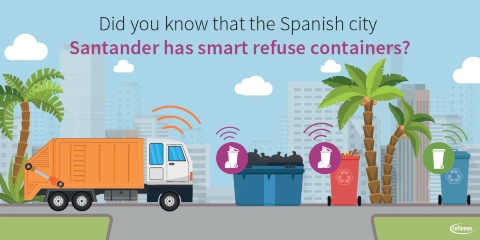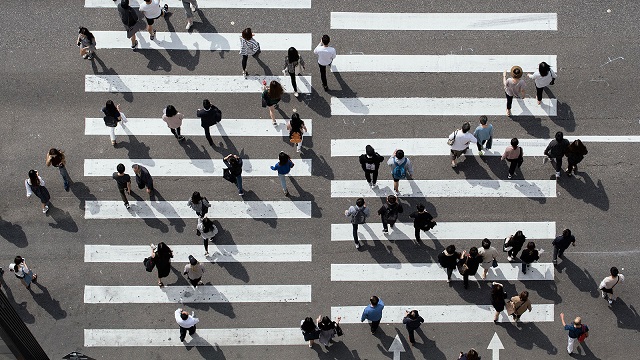
Urbanization leads to more and more people seeking a better life in the city. They leave villages and towns to benefit from the good infrastructure, diverse range of cultural attractions and jobs in modern cities. Yet how can more and more people lead a life worth living in a confined space?
One answer to that may be smart cities. The goal is to make cities more efficient, more technologically advanced and greener – and yet ensure no one is socially marginalized. So what should the city of tomorrow look like?

Mobility in the smart city
People have to get to work, school or the physician, or want to escape to the countryside. Mobility is therefore one of the key components of the city of tomorrow. In the ideal smart city, mobility is energy-saving, fast, efficient, low-emission and inexpensive. That is why forward-looking cities are focusing on electromobility. However, e-cars are still expensive and not everyone can afford one at the moment. Herbert Diess, Chairman of the Board of Management of Volkswagen AG, currently proposes government subsidies for very small electric vehicles so that people with low disposable incomes are not excluded from modern forms of mobility. Yet it is not only vehicles that have to meet modern requirements. The infrastructure in a smart city is also intelligent and notifies commuters of congested roads, accidents, disruptions and train delays, enabling them to choose alternative means of transport in good time.
The smartphone and smart card replace paper tickets
Instead of waiting at crowded machines, residents obtain their bus and rail tickets using an app on their smartphone or use smart cards they can top up. That saves paper and administrative work – but has to be reliable and simple so that the large numbers of people can pass turnstiles or board buses quickly. That entails special challenges: electronic ticketing systems must be able to process passengers’ data contactlessly, fast and reliably. Security chips and technologies help transfer the virtual ticket to cards and smartphones, sending the data in a matter of milliseconds.
In order to increase the benefits for customers, some cities or banks combine multiple applications in one solution – meaning you can pay for a cup of coffee, buy a ticket, hire bicycles or use social services with one and the same card. That saves space in your wallet and time at the counter.
Bicycles, cars and commercial vehicles are powered by electricity
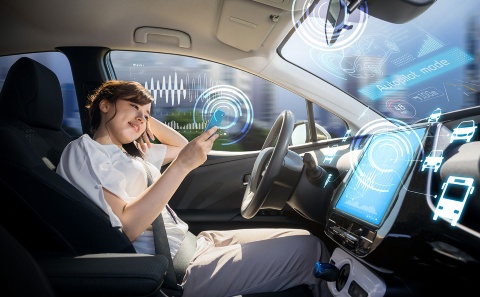
Oslo is already a model city and trailblazer in Europe when it comes to electromobility. 40 percent of registered new vehicles are now e-cars. And that is no surprise, since there are significant tax breaks if you buy one – for example, you pay no vehicle or value-added tax. Buyers are also exempted from a tax levied on vehicles with a combustion engine in Norway. The growing number of e-vehicles means more places to charge them are required. That is why the number of charging stations in Oslo is increasing by 25 percent a year. The general thrust for electromobility is clearly defined: Norway aims to allow only emission-free vehicles on the road by 2025.
Yet electromobility does not stop at electrically powered passenger cars. Commercial vehicles, such as buses, trucks, excavators or cargo vans, are responsible for a quarter of the CO2 emissions produced by traffic – and hence for five percent of total greenhouse gas emissions. Converting these commercial vehicles to electric motors would make a substantial contribution to protecting people and the environment. Special challenges are in the field of battery technology. Batteries for commercial vehicles often have to be larger and more powerful than those for passenger cars. In addition, batteries and components of the entire powertrain must be more rugged if they are to be suitable for vehicles used at building sites and in agriculture. Infineon develops robust power semiconductors for the electric powertrain that withstand vibrations and mechanical stress and are tailored to use in commercial vehicles. Moreover, Infineon develops components that are based on new semiconductor materials and improve energy efficiency.
Ideally, the batteries of commercial vehicles are fully charged during the night and deliver enough power for a whole working day. If they need to be recharged again during the day, that has to be done all the more quickly so that buses or vans are not out of action for too long. The vehicles and charging infrastructure must enable that. Infineon also develops suitable semiconductor solutions for the charging infrastructure.
Self-driving cars save time and energy
Is it really efficient to use time and energy after a day’s work at the office to go shopping with your car? No. We will combine business with pleasure in the future. Ordering food online on the way to work and having it delivered in the evening will be entirely normal. Delivery services will plan their vehicles’ routes as efficiently as possible. Individual vehicles will supply entire districts and so do away with individual journeys to the supermarket – saving time and reducing the amount of traffic on the road.

Autonomous driving also makes it possible to place orders on the way to work. It will not only be commuters who can devote their attention to online services while on the bus or train, but also car drivers – with robotaxis initially being the main means of autonomous transport. Much like present-day car-sharing services, you will book an autonomous vehicle, get in and then get out at your destination. Self-driving vehicles not only enhance convenience and save time, but also cut fuel consumption and reduce congestion and pollution. The reason: The vehicles are connected with each other and the infrastructure and hence know how to respond efficiently and expediently. They efficiently avoid congested roads and make their way directly to the next passenger or – if you’re the vehicle owner – the next free parking spot.
A further key factor is safety: The self-driving car reacts faster than people in dangerous situations. Autonomous driving is made possible by the interplay between a wide range of different sensors. Ultrasonic sensors identify obstacles when a car parks automatically, while radar sensors detect objects and their speed relative to the vehicle. Image sensors in cameras supply further visual data. When combined, the information from all the sensors delivers a complete picture of the environment – and that is the basis for autonomous driving.
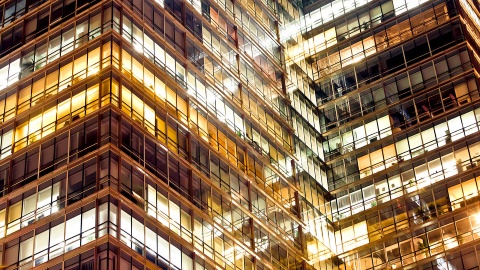
The IoT city
As with its little brother, the smart home, the Internet of Things (IoT) will play a key role in how we live together in the city of the future. A broad range of different devices, vehicles and infrastructure will be equipped with sensors and interconnected. Data is generated, recorded and stored via the cloud and made available to authorized persons and systems. This connectivity and availability of data are the backbone of a smart city. Inhabitants can retrieve public data using technical devices, such as smartphones or information touch screens, and interact with the technology.
Smart streetlights provide support in everyday life and emergencies
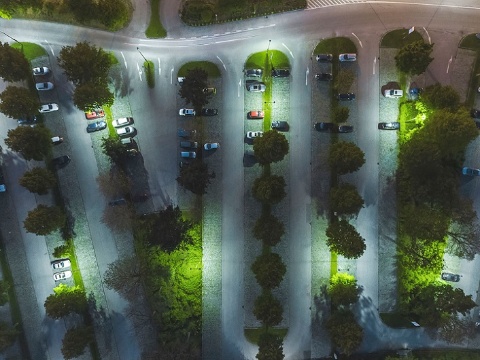
A prime example of things that can be used with greater efficiency and versatility in a smart city is the streetlight. Footpaths, cycle paths and roads are lit far more efficiently and with much lower power consumption because the light detects the weather conditions by means of a sensor and adjusts its intensity. More light is emitted if there is fog or heavy rain. The lighting is turned down when no cars, bicycles or people are nearby. A smart streetlight can also supply residents with Wi‑Fi and measure the air quality. Measurements and environmental data are reported to the cloud so that a detailed picture of the air quality in the whole smart city can be obtained. If thresholds are exceeded, the responsible body is notified and can respond by imposing local speed limits, blocking individual roads or taking similar measures, for example. The volume of traffic can also be measured at important points and communicated to the traffic control center. That enables measures to be taken to prevent tailbacks, for instance. Another conceivable aid is alarm buttons passers-by can use to call for help in the event of accidents or other emergencies. The streetlight can give drivers whose car is not fully automated tips on where to look for a place to park and display free spots or charging stations on their smartphone. The streetlight itself also acts as a charging station.
Protecting IoT cities against manipulation
Security is one of the key factors in digitalization and connectivity over the Internet. Attackers can cause e.g. the power supply to collapse. Denial-of-service attacks are also a potential threat: A specific target is flooded with requests, with the result that the data network becomes overloaded. In turn, that can mean necessary Internet services are no longer available. Appropriate security solutions must be integrated to protect devices, vehicles or factories connected via the Internet of Things against theft of data or other unlawful manipulation.
Software alone is not enough – it might be rewritten or manipulated. In an increasingly virtual world, security chips – in other words, a piece of hardware – act like a safe for digital data. Devices IDs or cryptographic keys can be stored and protected in them. Access from the network is impeded – and attacks on the chip itself usually entail a very great deal of technical effort and are rarely successful. The principle is familiar from bank cards with a chip or electronic passports and is now being applied to new connected devices – from the car, to connected production machines, to the digital door lock.

Security in the smart city
One aspect is top of the list in any smart city concept: security. That also goes for one of the most important documents every citizen has: their means of personal identification.
Electronic ID cards and passports

Modern IDs have to meet stringent requirements. The document must be machine-readable so that border checks and clearance are sped up. At the same time (e.g. for the electronic passport), standards defined by organizations like the ICAO (International Civil Aviation Organization) must be met to enable protection of personal, biometric data or visas that have been granted. That ensures the necessary level of security and convenience.
One challenge with ID cards is that they differ regionally, in some cases very greatly. In a number of countries, some of these documents are also used to store health insurance data or serve as proof of voter eligibility. The biometric ID of the future must therefore not only meet stricter security requirements, but also be designed to be able to be linked with digital services. Infineon meets these challenges with security solutions consisting in chips and software. So the ideal blend of security, functionality and a long service life for ID documents is found.
Citizens in the smart city pay contactlessly
Whether in a café, shopping at the weekend or paying a ticket: Contactless payment is on a steep upward curve. Paying quickly and easily via NFC while out and about is popular among the younger generation in particular. 77 percent of 16- to 29-years-olds in Germany find it practical to make payments on the fly. Although enthusiasm about this technology falls steadily among older age groups, 45 percent of the over-60s are still interested in modern means of payment. That was revealed by a survey by the Allensbach Institute for Public Opinion Research (IfD) among holders of a girocard in Germany in 2018.
Yet transactions should not only be quick and easy, but also well secured. That is why Infineon offers solutions that unite various aspects: There is hardly any country with a comprehensive contactless infrastructure – cards must also be able to be inserted in a reader. Chips that offer contactless and contact-based technology (in other words, a dual interface) bridge the gap between the old and newer technology. Yet Infineon not only offers flexibility as regards data transmission: Infineon is also committed to internationally accepted, vendor-independent standards – after all, the credit card, payment service on the mobile phone or a ring with a payment function should work not just in Europe, but also in Asia and Africa.
Consumers still usually need a PIN for identification – but that will be simpler thanks to biometric methods. The latest smart cards permit identification by fingerprint. The time-of-flight solution from Infineon allows user authentication by means of face recognition when payments are made by smartphone.
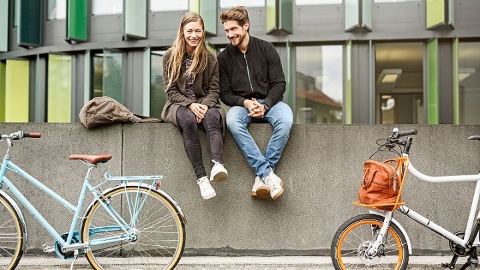
Smart city: green and energy-efficient
The city of the future will need a lot of energy. An adequate power supply must be ensured for more than ten million citizens in a single city – where possible from renewable sources. Cars, local public transport and street lighting, building technology, IT infrastructure, 5G mobile communications and large industrial plants: Modern infrastructures should not only focus on smart energy distribution and consumption. Energy should also be generated as intelligently as possible and from renewable sources.
Efficient and close to the consumer – solar thermal systems and vertical farming

Sustainability is a must in view of climate change and finite resources. Current generations should be able to cover their needs without jeopardizing the ability of future generations to do so. Goods should also be produced as close to the consumer as possible. For instance, open-air supermarkets by a vegetable field close to the city might help inhabitants obtain fresh food – such as potatoes or rice, depending on the region. On the other hand, vertical fans in central buildings are suitable for fast-growing, high-quality crops, such as bean sprouts. Urban roof gardens in the direct vicinity can help cater for consumers’ individual food needs, albeit on a smallish scale. State-of-the-art LED technology helps vegetables grow. Tomatoes and salad develop faster since there is light from LEDs even when it’s raining or at night. Solar thermal systems, photovoltaics and geothermal heating are approaches for obtaining energy locally and in a resource-conserving way.
Toronto, Santander, Singapore: trailblazers in terms of the smart city?
Alphabet, Google’s holding company, has already taken the first steps toward the future. Sidewalk Lab, the city-building subsidiary of Alphabet, has acquired a 12-acre site on Toronto’s waterfront. The company aims to realize its version of a smart city there. Innovative construction technologies and energy systems, as well as self-driving vehicles giving residents an alternative to the private car, are planned.
The coastal city of Santander in Spain has used many smart city concepts since as far back as 2010. For example, refuse containers are fitted with sensors and are not emptied until they are full. That slashes the operating costs of such a municipal service. Sprinklers at parks are only turned on during periods of dry weather. Taxis are also equipped with sensors. That enables potential passengers to find out in advance how many free taxis there are and where.
Moscow aims to transform itself into a smart city by 2030, using Singapore as the model. The Russian capital aims to make itself more attractive for citizens with the aid of the latest technologies, such as 5G and blockchain. The responsible authorities laid the foundation for that several years ago. Free Wi‑Fi in the metro and charging stations for smartphones in buses and trains and at stops are now standard, for example.
Smart home, the “little brother”
Smart homes are an integral component of small cities. Smart power consumption on a smaller scale begins there in the shape of home appliances. A combination of sensors, microcontrollers and power semiconductors makes appliances like the refrigerator energy-efficient. For instance, a fridge’s power consumption can be cut by up to 40 percent using variable-speed compressors. What starts with home appliances and air-conditioning systems can then be extended to street lighting, mobility and a city’s entire infrastructure – transforming a city into an energy-efficient smart city.
Last update: June 2019

